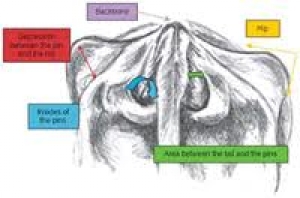Dairy Management
Body Condition Scoring Management

Body condition scoring is an objective assessment of a cows body reserves at a given point in time, with values ranging from 1 (extremely thin) to 5 (obese). Research at Moorepark Farm, Teagasc, Ireland has shown that body condition score (BCS) at the time of first service and the loss in body condition from calving to first service affects the reproductive performance of dairy cattle. Maintaining the appropriate herd BCS profile should be viewed as a component of the long term farm management strategy, and sudden losses (e.g. after calving) or sudden gain (e.g. during the dry period) should be avoided when possible.
| Table 1. Target body condition scores at key times of the year. | ||
|---|---|---|
| Time of year | Herd Average | Range |
| Drying off | 3.0 | 2.75 - 3.25 |
| Pre-calving | 3.25 | 3.0 - 3.5 |
| Start of breeding | 2.9 | 2.75 - 3.25 |
Moorepark Research Farm says that cows want to gain very little during the dry period. Cows with a BCS of 4 or more have a high incidence of postpartum disorders, including fatty liver, milk fever, retained placenta, metritis and ketosis. Cows with excessive BCS at parturition will lose a lot of condition after calving. Excessive loss of bodyweight and body condition results in anoestrus, cystic ovaries, poor expression of oestrus, decreased conception rates and increased incidence of embryonic mortality.
On the other side of the coin, cows that calve down too thin are unlikely to reach the target BCS by the start of breeding. This will result in a high proportion of non-cycling (anoestrous) cows at mating start date, which will have a negative impact on submission and conception rates, and hence six week in-calf rate.
It can be difficult to achieve the BCS targets outlined above with cows that have been aggressively selected for increased milk yield. Research has indicated that high-production type cows lose body condition during early lactation, but fail to regain condition during the remainder of the lactation. Feeding higher levels of concentrate to these cows results in higher milk production, but doesn’t improve BCS during lactation. In the long term, these cows are unsuitable for seasonal-calving grass-based systems of production.






















